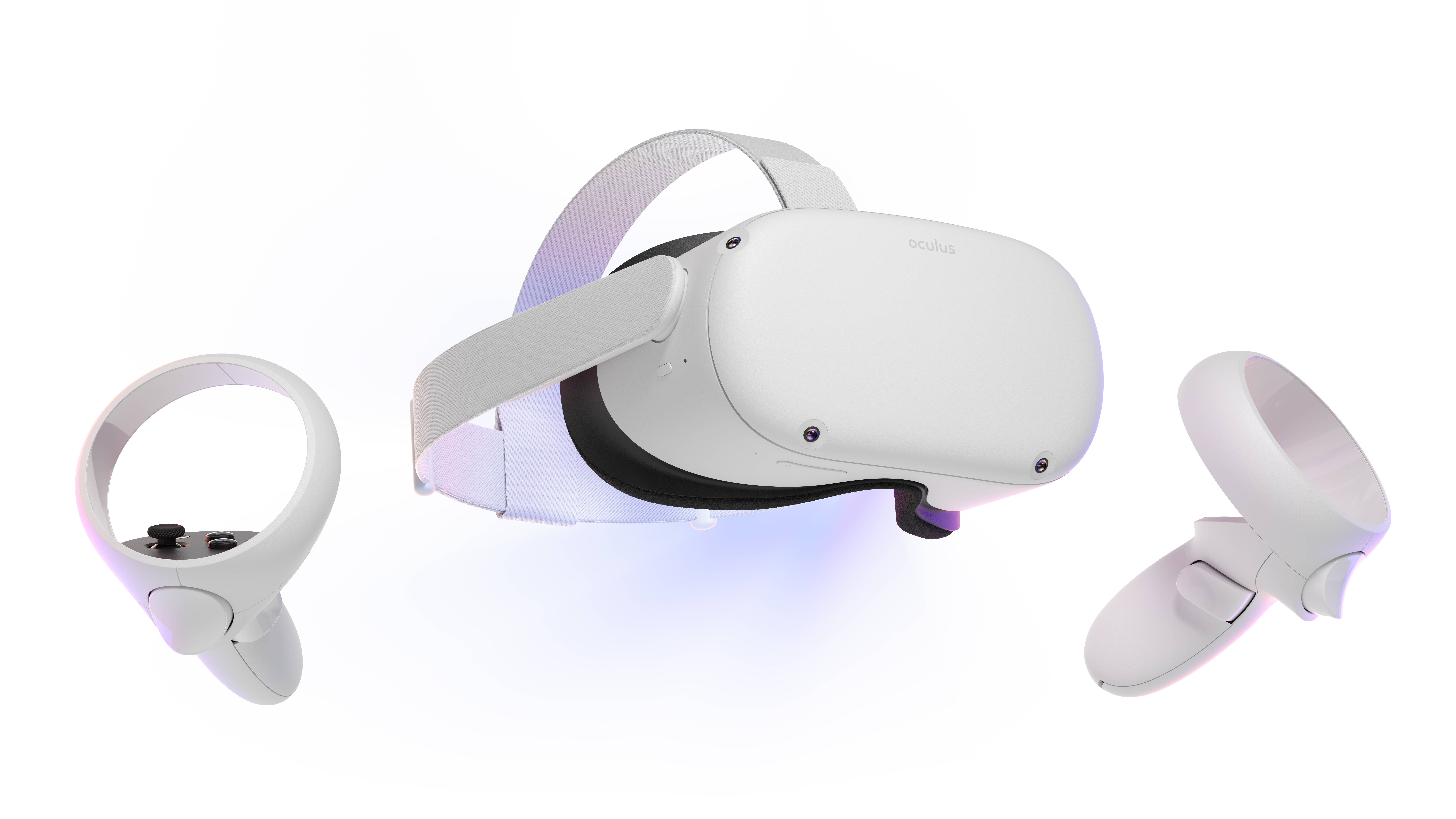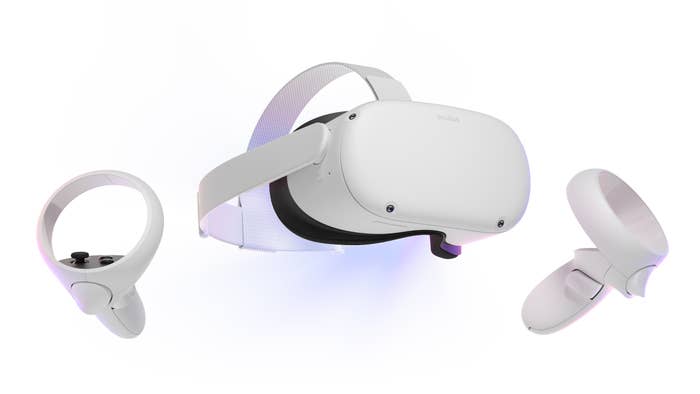
If you have had no luck picking up an Xbox Series X or PS5, you may have noticed a few Meta Quests sitting at every retailer with video games. The device looks sleek, but you may be unsure of where this experience sits in the spectrum of Google Cardboard to Ready Player One. Virtual Reality is a technology that has slowly been developing in the background over the last few decades. VR has gone from out of reach, to accessible, to affordable.
For me, I’ve been following VR for a very long time. I started my journey as a kid in arcades, watching my siblings play early VR experimental games. I picked up a Nintendo Virtual Boy second-hand in middle school. I didn’t get the memo that I was supposed to hate the console, and spent months playing Mario Tennis. As a college student in 2010, I got to develop games at Miami University of Ohio’s VR lab called “The Hive,” a VR gymnasium set up with tracking points. From 2013 to 2016, I spent time making 360 videos for brands with a number of custom rigs and testing out those videos and spaces using cell phones and the HTC Vive. While all of those experiences were great, it has been interesting to see the technology evolve over the years.
There have been a lot of issues with VR headsets in the past. Low resolution, choppy frame rates, small field of view, too heavy, etc. The biggest issue that has kept your average person from trying VR is that it has been cost prohibitive. The cost of my college’s VR set and gymnasium filled with trackers in 2010 was around $125,000. The cost of a headset and a beefy gaming PC I worked with in 2016 was around the $4,000-6,000 range. Even today, premium VR sets and PCs could run for a couple thousand dollars even at minimum specs.
Time typically helps technology get cheaper and better. The Meta Quest 2 looks to solve the cost problem by making its all-in-one unit able to be used with or without a PC. This head set, which starts at $399, and regularly goes on sale, is much more affordable and accessible. The lowest bar for VR used to be experiments like Google Cardboard. The Meta Quest 2 sets the bar much higher and becomes a new standard of what a quality VR experience should look like. The Metaverse that VR promises, however, is still currently in development.
In late October 2021, Facebook announced that they’d be rebranding their company to Meta and their focus over the next couple of years would be creating the Metaverse. It’s 2022, and there are more than a few companies that are trying to make their own Metaverses with the hopes of becoming the gold standard of Web3. Meta, or the company formerly known as Facebook, has rebranded the Oculus Quest 2 to the Meta Quest 2. Currently, if you try to buy one on Amazon, download the app, or go to the app store, some items are named Meta while others are still called Oculus, but the social handles did change to Meta, and the company is continuing to transition into the Meta branding.
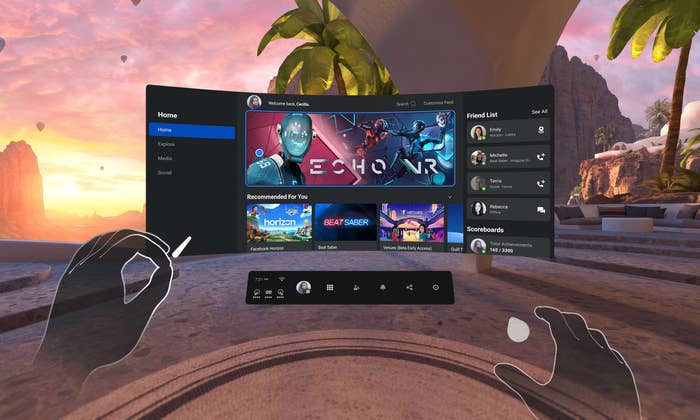
The Introduction
When you slip on a VR headset, you are instantly greeted with a “wow” moment. Think about the first time you played a Nintendo Wii or used an iPhone. There is a certain intuitiveness to the experience that makes it very easy to jump into. The hardware seems simple enough, one headset capable of 120 Hz, and two Meta Quest 2 touch controllers with thumbsticks, buttons, triggers, and haptic feedback.
The first thing you do when you get your Meta Quest 2 is set up a profile. As a pro tip, you should use a referral link to set up your oculus account before you set up your Meta Quest 2. If you do, the person who referred you and you get a $30 credit, which is enough to buy some games.
After you set up a profile, you can now download or purchase some apps and games. The way you put software on your Meta Quest 2 is similar to the way you would use an iPhone or computer. There is the Oculus Store where you can purchase most of your apps. The major difference between the models of the Meta Quest 2 is internal storage size (64 GB, 128 GB, 256 GB). The 64 GB model is being phased out, and if you don’t want to continuously be deleting and reinstalling games, I’d start with the 128 GB model.
The Meta Quest 2 can be used sitting down or standing up and moving. There is a direct correlation between the amount of space available to walk around and the immersiveness of your VR experience. Many games recommend a 6.5 ft x 6.5 ft. play area, but it isn’t 100 percent necessary. In a pinch, I’ve played many games in a much smaller play area. Having a standing play area also helps reduce motion sickness. Basically whenever there is input lag or things on screen are moving, but you are not, your brain gets confused and your stomach can get queasy. There are a number of ways developers have optimized movement to reduce this. As I got more experience messing around in VR, the less queasy I got. By the end of a week, I was fine with using “expert and immersive controls” in most apps, which for most games take off the guard rails in terms of “unnatural movement.”
There are several “intro to oculus” apps, such as First Steps for Quest 2 and Oculus First Contact, but if you want more than an intro program I’d recommend Horizon Worlds. Horizon Worlds is developed by Facebook and also gives a look into social experiences. Trying out those other apps is fun too though and helps you orient yourself to operate in 3D spaces.

Social Apps
I spent some time looking for great free gaming experiences on the Meta Quest 2. I’d compare it to the early days of the app store on the iPhone, there are tons of free games, but the pay-to-play games are for the most part better. There are quite a few social apps that nest mini-games inside of them. The main point of these apps is just chatting and interacting with others, and the mini-games and activities serve as catalysts for conversation. If you’re dying to try out these experiences, I’d say start with Horizon Worlds. It does a great job of laying out this general concept and has a decent amount of polish. There are other social apps, such as VR Chat and Rec Room. I couldn’t really get VR Chat to run on the Meta Quest 2, and Rec Room’s movement made me queasy, but the general concept is the same, a social construct filled with activities and mini-games.
A lot of these apps remind me of a VR version of Second Life or PlayStation Home. There isn’t a clear point to them beyond socializing, but the same could be said about most social media. It is interesting to look at and gives a glimpse into the future potential of the platform and a small glimpse of what the Metaverse could one day look like.
Games
From a graphics standpoint the gaming experience on the Quest ranges from PS1 to early PS4 levels of polish. Any graphical limitations of the Quest are usually masked over by consistent art direction and the awe of a true first person perspective.

Resident Evil 4 VR
Resident Evil 4 is the game that changed the series and is easily one of my favorite action-horror games. You play as Leon, a government agent sent to investigate the disappearance of the president’s daughter. This is basically a Zombie game, but the villagers in this game are taken over by a parasite, not zombies if we are splitting hairs. Resident Evil 4 VR looks very similar to how I remember playing it on the Nintendo GameCube, for better or worse. The first-person VR perspective and controls make it feels like I’m playing one of my very favorite games for the first time. If you are itching to play through Resident Evil 4 while you are waiting for the remake to come out, then this is a new way to experience it. If you are familiar with this game you may not be sure about its $39.99 price tag, but I’d say if this ever goes on sale you should definitely pick it up.
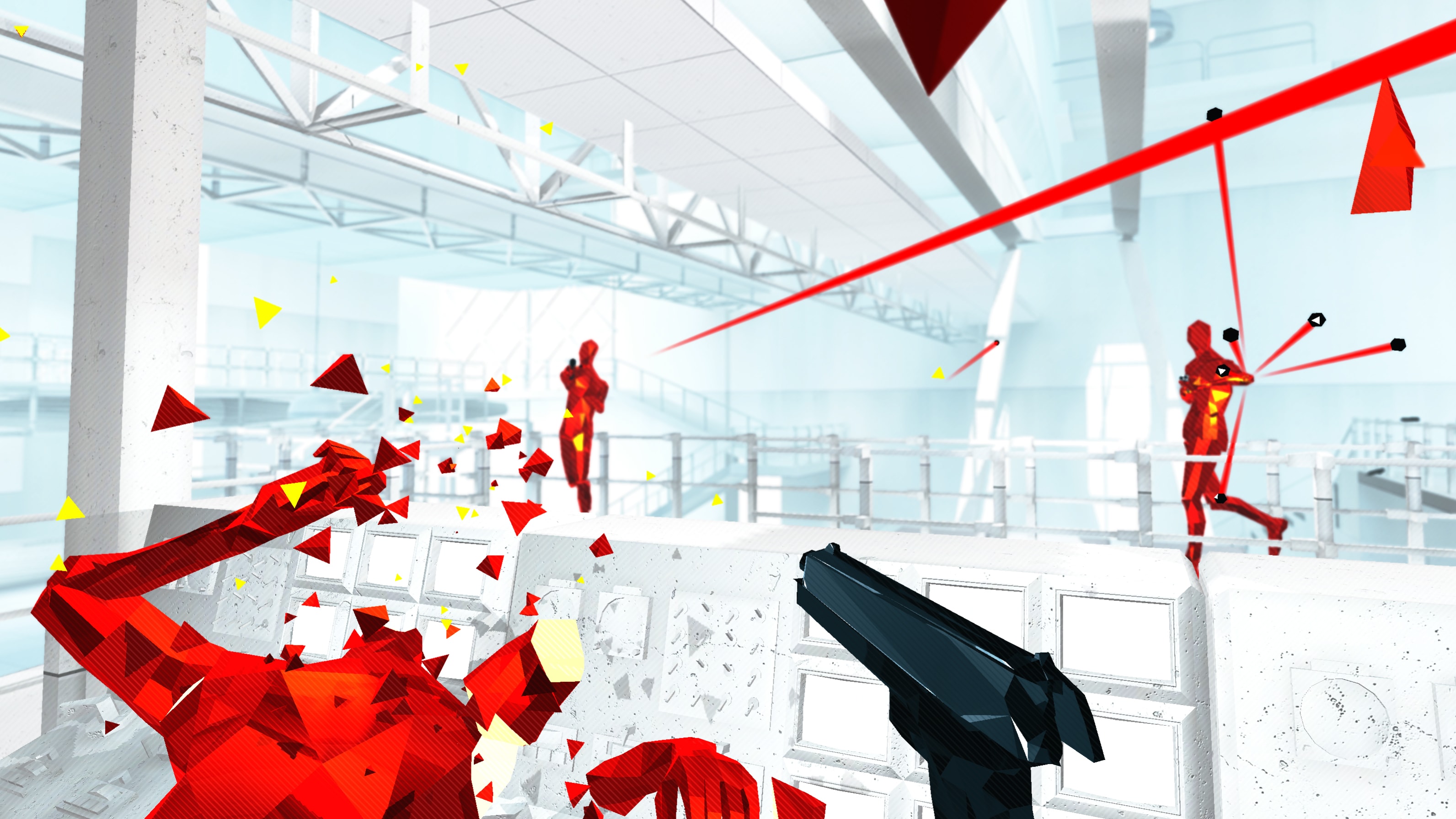
SUPERHOT VR
If you like bullet time from The Matrix, you’ll love this first-person action puzzle game. As the tagline for this game goes, “Time only moves when you do.” This allows you to dodge bullets, pick up objects to throw at enemies, and shoot your way through a barrage of bullets. The look and feel of this game remind me of VR games from the 90s but with way more polygons. All the enemies are red, and the graphics intentionally look hyper polygonal as if they’re lifted straight out of a PlayStation 1 game built with no textures. This game is a must-play.
Beat Saber
If you like Parappa The Rapper, Dance Dance Revolution, or Guitar Hero and have ever thought, “This game would be better with neon and light sabers,” you don’t have to look any further than Beat Saber. This game is an addictive rhythm game that keeps you very active. There are multiple music packs to keep the game fresh. In the past, I didn’t understand the hype of this game, but when I actually downloaded it, I saw time slip away as I tried to get an “S” ranking. This is fun, but has a high potential of knocking over stuff if you don’t clear out your play space. It also doubles as a decent workout.
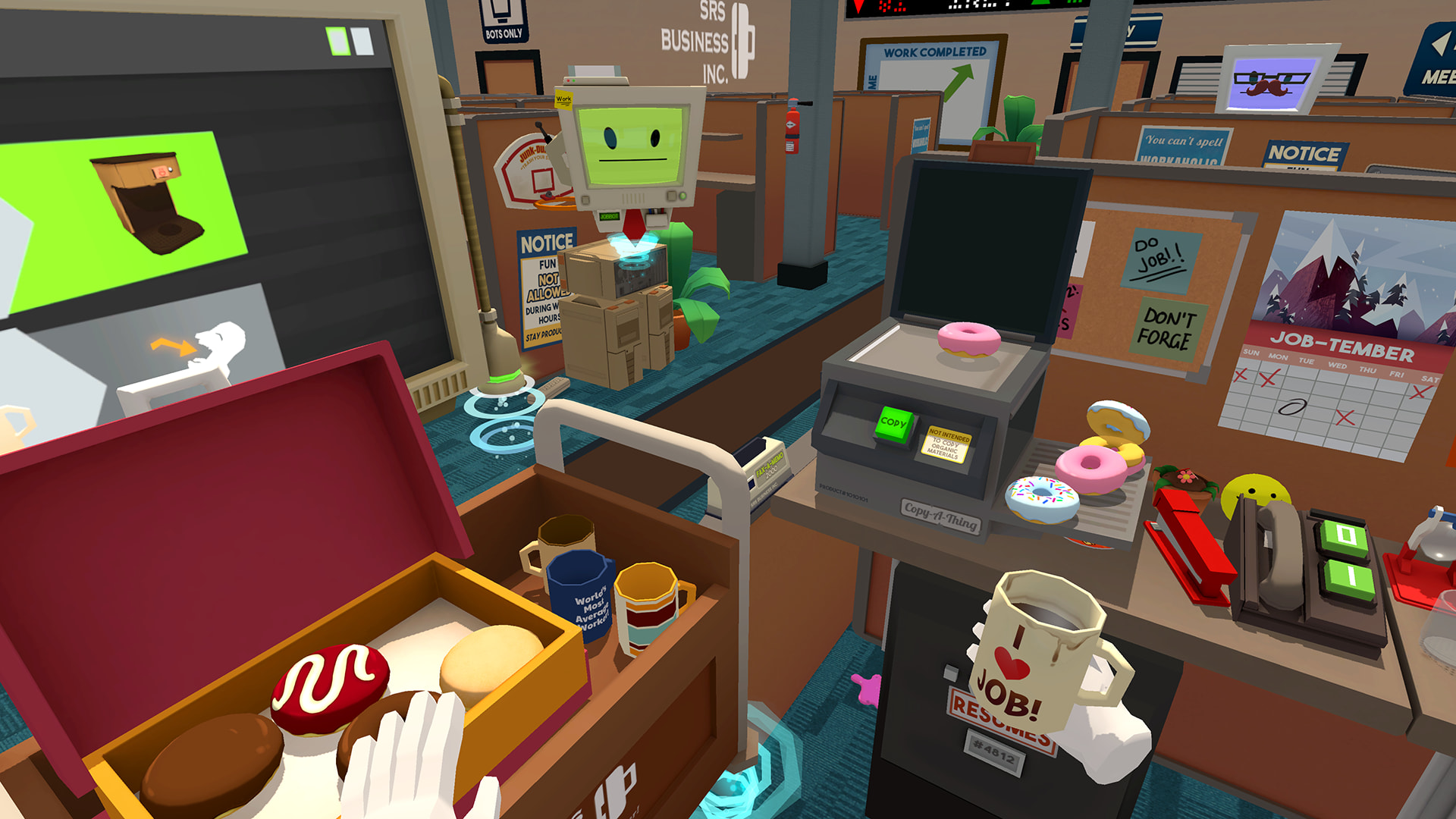
Job Simulator
In a future where everything has been automated, humans go to fake jobs for amusement. You play a “human,” who is visiting different approximations of past workspaces run by glitchy robots. This satire on working life is very self-aware. This cartoony game is funny, and worth it especially if it goes on sale.

Vader Immortal
Do you like Star Wars? Do you wish you could be in an original Star Wars story centered around Vader? Then look no further. This game is equal parts story, action, atmosphere, and “escape room.” The production value of this game is very high, and it is super immersive. The game itself is broken up into three chapters, so if you’re unsure of this, you can always just buy the first chapter before shelling out for the entire story. For me, this is one of the best experiences on the Quest.
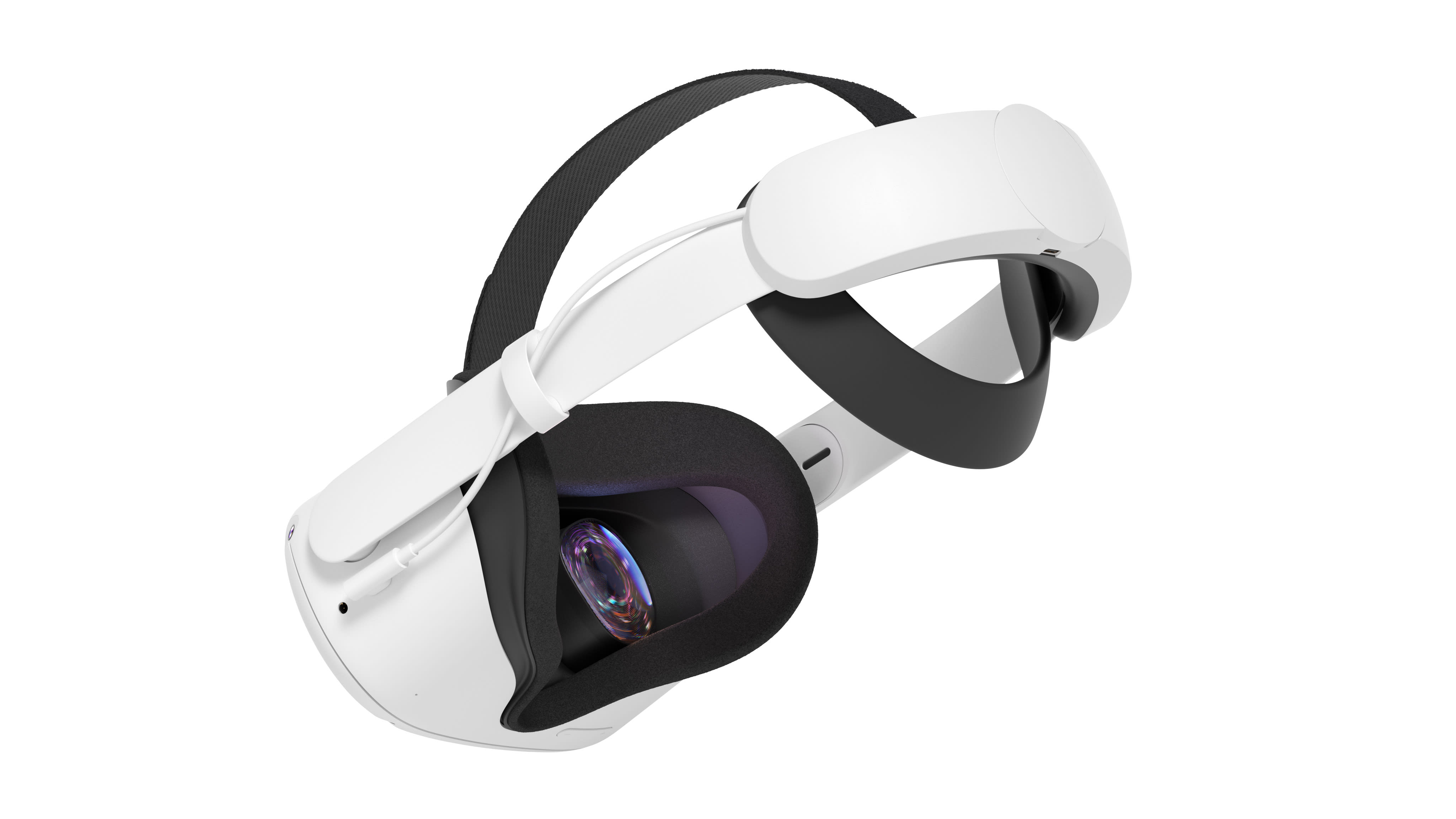
Leveling Up
I have a large head. I’m talking, “I can’t wear baseball caps on the last clasp” big. This became a bit of a problem with the default setup. It made everything uncomfortable at first. Luckily there are a series of first and second-party accessories to help round out your experience. Meta sent me a third-party face cover made by a company called VR Cover ($29), and that solved my problems. The battery with normal use lasts about two hours, there is an elite strap with battery ($119) that you can upgrade to that will increase your battery life, speakers, and overall comfort level. While some may be turned off by the piecemeal nature of this upgrade system, I overall see the advantages of it. Making features optional sets the initial price much lower, and allows for more customization beyond Meta’s official offerings via third-party options. Another third party to check out would be kiwi. Based on all the online threads I read about people customizing their Oculus, that name came up over and over again.
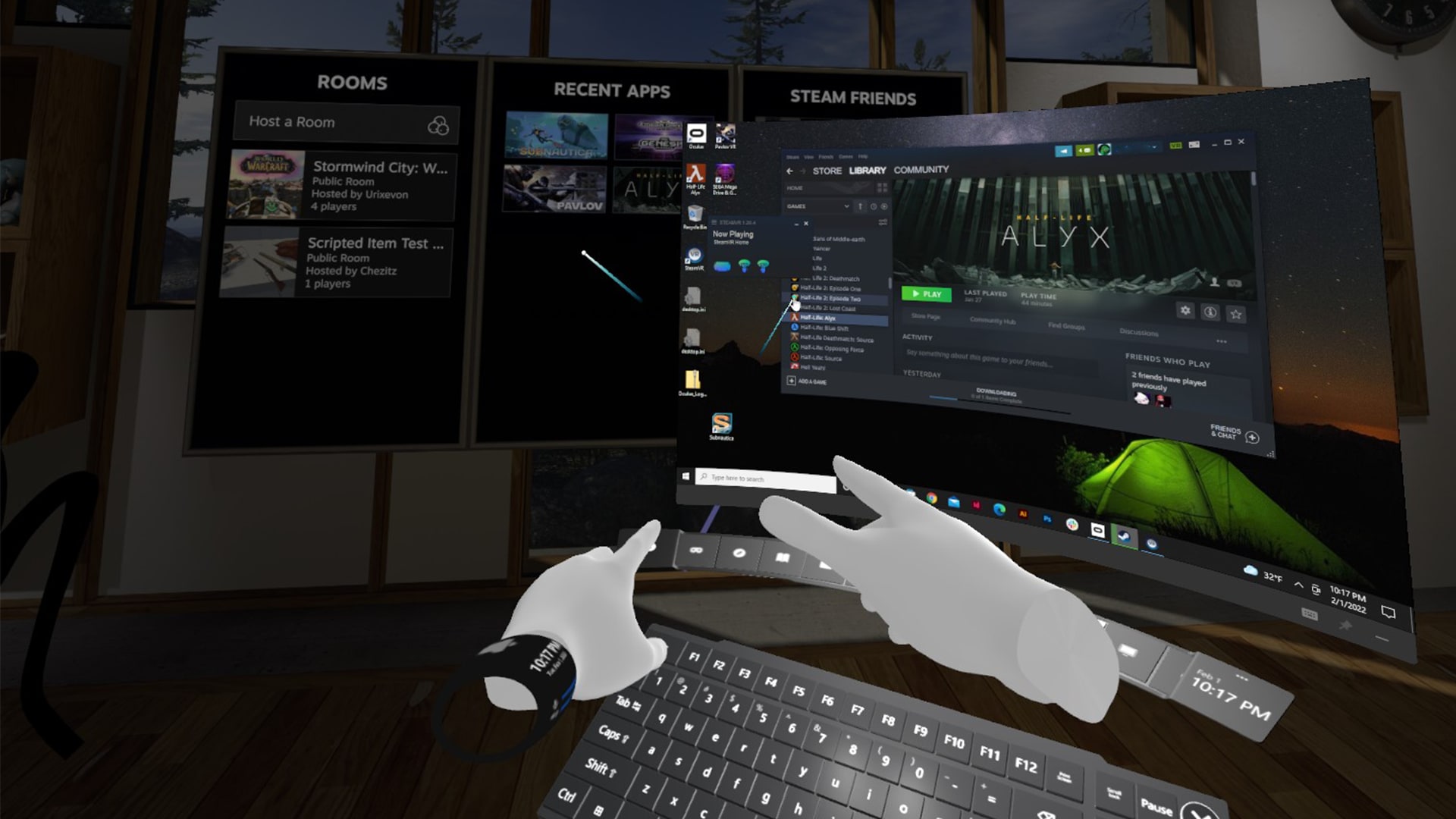
The Quest is impressive on its own, but if you have a gaming PC you have the potential to unlock more experiences. Think of the Meta Quest 2 as two small monitors in front of your face that have the ability to put computer windows in 3D space. This allows you to use the full rendering capabilities of a gaming PC beamed directly into your eyes. Meta actually has a mode called Oculus Link that connects the Quest directly to your PC. Depending on your setup, you can either connect wirelessly to the Oculus (Air Link) or with a long USB-C cord (Oculus Link). Meta sells an official cable that retails for $79.99 but also offers the ability to test any other long USB-C cord to ensure it’ll work with the Quest. The one I went with cost $24.99.
The main reason you’d go through all the trouble of hooking up your Gaming PC is to have access to other gaming storefronts. I personally have hundreds of games in my Steam account and prefer to collect most of my games there. Many games are available on multiple storefronts, so picking where you’d like to keep your game library is up to you and the experience you’d like to have.
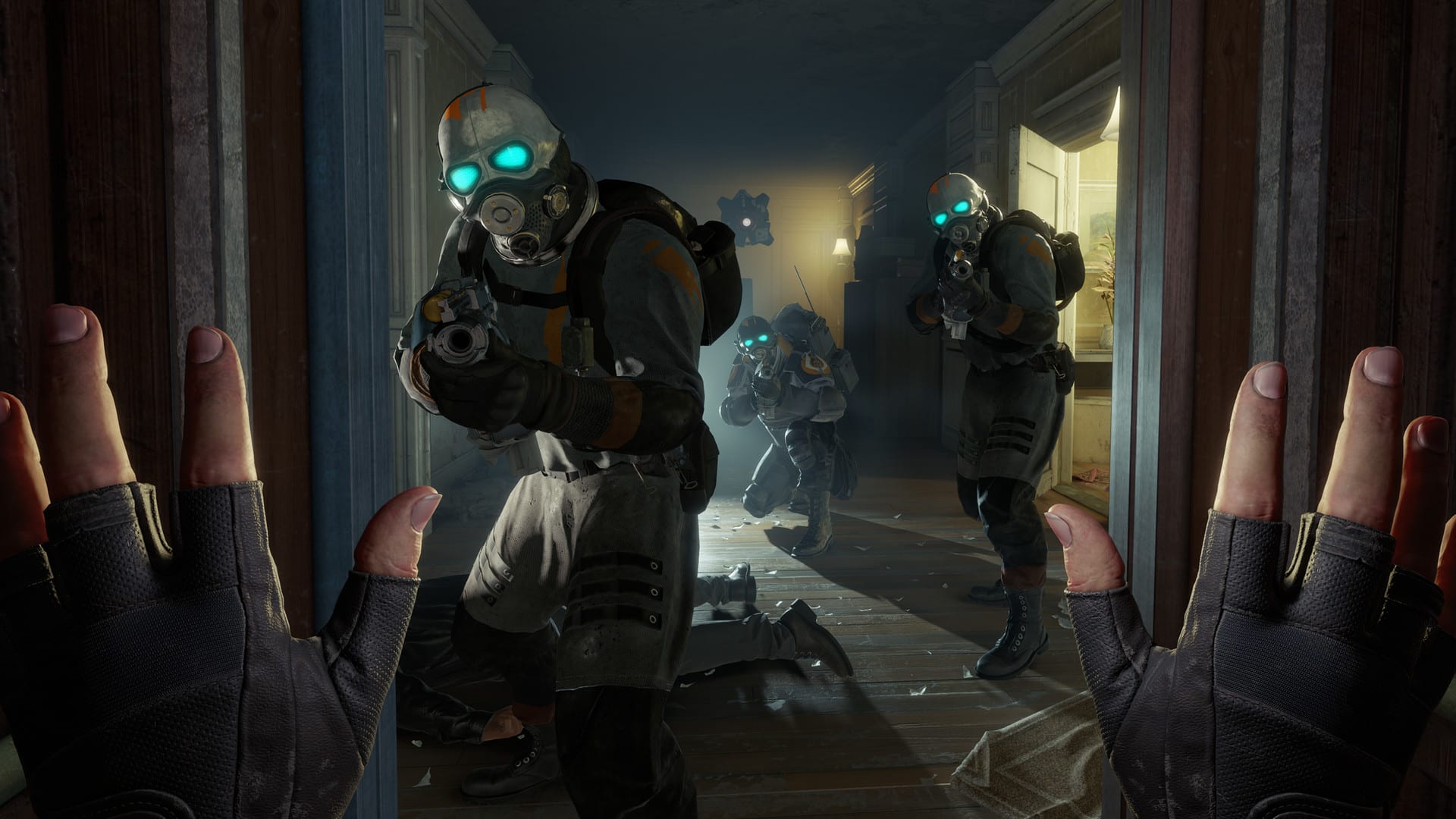
Half-Life: Alyx
Right now the very best game in VR is hands down Half-Life: Alyx, which is only available on Steam. I spent 20 minutes in the first room of the first level just playing with bottles and the physics playground that the game designers at Valve created. The game may not be the exact Half Life 3 that fans have been waiting for, but the experience is unlike any other I’ve had in gaming. For me playing Half Life: Alyx is a benchmark that more than any other experience shows what a true AAA game in VR looks like.
Metaverse
Right now the Metaverse is a tricky subject to tackle. Some think it will be a user generated paradise in the 3D space filled with NFTs and a decentralized way for people to interact and make money from their creations. Others think the Metaverse is already a well-treaded space filled with false profits that in the long term will continue to put control of the internet in the hands of a chosen few companies. There are plenty of speculators at best and scammers at worst eager to figure out what the future holds. Right now, it’s too early to tell.
One of the biggest questions when thinking about the Metaverse is “Who’s going to build it?” As a person who’s spent my entire life playing games with online communities, part of me thinks that the world of connectivity and online interaction, and monetary transactions have existed for years. This is why companies who already specialize in video games and virtual worlds already have a head start.
Do you want a Metaverse built by Meta? I can’t give you the answer to that question, but what I can say is that trust and privacy are big factors for me when thinking about the future of online activity. Nearly all social media companies have been hit by Apple’s features that make it harder for companies to track consumer activities. And as many are aware, nearly all social media companies make money by collecting consumer data and selling that information to advertisers to better target ads. That information can do anything from convincing people to buy products from a small streetwear company, to potentially turn the tides of an election
The biggest caveat to Meta Quest 2 has a lot to do with how you as a user feel about Meta, formerly Facebook, as a company. I’ll admit that one of my concerns with purchasing one for myself was privacy. As a part of their broader keynote on Meta, Mark Zuckerberg said:
“As we’ve focused more on work, and frankly as we’ve heard your feedback more broadly, we’re working on making it so you can login into Quest with an account other than your personal Facebook account. We’re starting to test support for work accounts soon, and we’re working on making a broader shift here, within the next year. I know this is a big deal for a lot of people. Not everyone wants their social media profile linked to all these other experiences and I get that, especially as the Metaverse expands.”
As of Aug. 23, Meta released Meta accounts, which allow you to log in to the Quest without a Facebook account. This is a step in the right direction, and it should be applauded. Now is it a problem that they themselves created by making linking a Facebook account mandatory? Yes. Should it still be applauded that they fixing their mistakes? Yes, too.
Who knows what the future will hold? Established companies such as HTC and Valve will continue to have premium experiences. There are also rumors that there may be new players in the near future in the form of Apple, ByteDance (the owners of TikTok), and Sony (with their second show of the PSVR2.)
What I do know is that the Meta Quest 2 lowers the barrier to entry to VR. It offers brand new gaming experiences, and a preview of the internet in 3D. It is a good thing that more people are purchasing this device and other headsets like it. For those of us who are excited by the idea of a flourishing VR gaming experience, more users are good. This will hopefully lead to more competition, innovation, and a decentralized ownership of Web 3.

